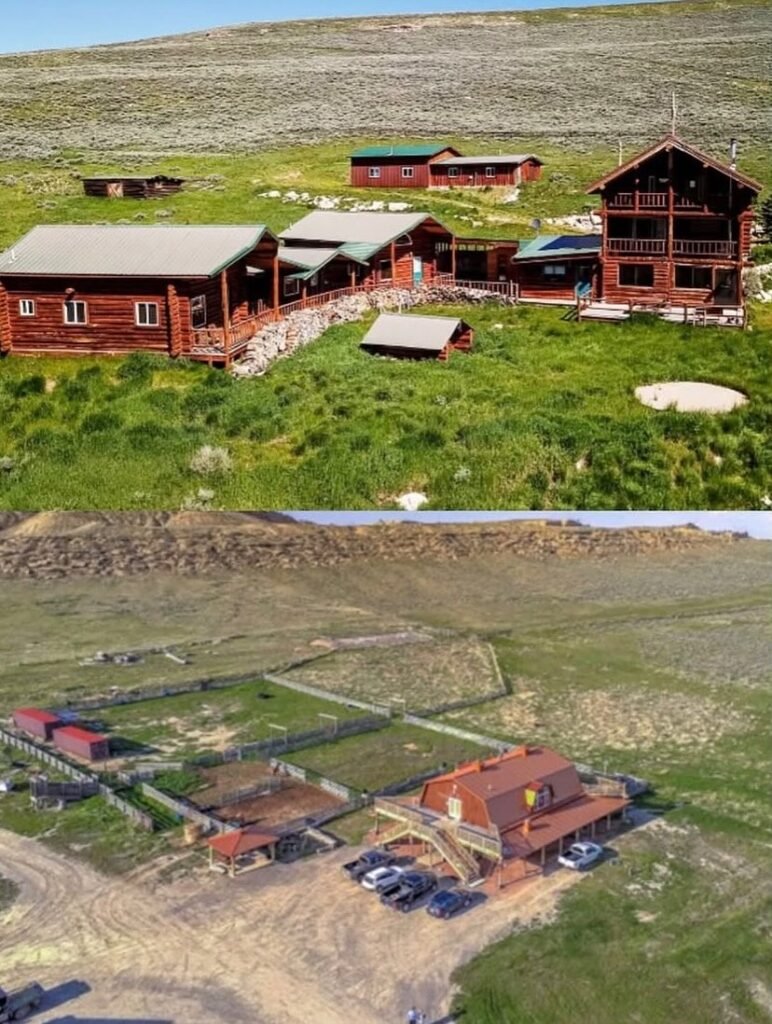
After six years of speculation, creative vision, and controversy, Kanye West has officially parted ways with his Bighorn Mountain Ranch in Wyoming — marking the quiet end of an ambitious chapter in the artist’s career.
The 6,713-acre property, nestled in the vast natural beauty of Cody, Wyoming, has been sold back to its original owners, the Flitner family, who first sold it to West in 2019. Once envisioned as the cornerstone of his futuristic “Yeezy Campus” — a hub for fashion, innovation, and creativity — the ranch has now become a symbol of both ambition and unfinished legacy.
A Dream in the Mountains
When Kanye purchased the sprawling Bighorn Mountain Ranch six years ago for an estimated $14 million, it was seen as a bold move — even by his standards. The rapper, producer, and designer had long been fascinated by isolation, creation, and reinvention. Wyoming offered all three.
The ranch, with its rolling plains, lakes, and panoramic mountain views, became the epicenter of his “Wyoming Era” — a period defined by introspection, experimentation, and spiritual searching.
During his time there, Kanye hosted listening parties, produced albums like “Ye” (2018) and “Jesus Is King” (2019), and even began building prototypes for his Yeezy shelters — dome-like structures inspired by sustainability and futuristic architecture.

The “Yeezy Campus” Vision
At the height of his Wyoming dream, Kanye revealed plans to transform the ranch into Yeezy Campus, a massive creative compound that would house his design studio, music facilities, sustainable housing prototypes, and even agricultural experiments.
The idea was to build a self-sufficient community — one that blended technology, design, and spirituality in true Kanye fashion.
In interviews and social media posts, he described it as a place where “innovation meets creation,” combining architecture, fashion, and rural simplicity into one ecosystem.
Blueprints reportedly included structures designed to resemble ancient dwellings — blending futuristic minimalism with nature’s raw beauty.
However, zoning issues, construction halts, and changing business partnerships slowly eroded the dream.
From Vision to Reality — and Back
Despite the grand vision, the reality of maintaining such a massive property in rural Wyoming proved complicated. Reports surfaced of legal disputes with local authorities over building permits, environmental regulations, and land use.
At one point, Kanye’s dome prototypes were dismantled after local officials ruled they violated housing codes.
Meanwhile, his attention began to shift. Between 2020 and 2022, West faced public controversies, personal changes, and major business fallouts — including his split with Adidas, loss of billionaire status, and multiple lawsuits.
Gradually, the Wyoming chapter faded into the background as new creative ventures — such as Yeezy Season X, Vultures, and his relocation to Los Angeles and Italy — took center stage.
The Sale Back to the Flitners
In a poetic twist, the ranch has returned to its roots. The Flitner family, longtime Wyoming landowners, have reacquired the estate — essentially bringing the land full circle.
The sale represents not just a business transaction but the closing of an era that saw one of the world’s most influential artists seek peace, freedom, and innovation in the American wilderness.
While the sale price hasn’t been publicly disclosed, sources close to the transaction describe it as “mutually beneficial,” with both parties respecting the property’s legacy.
Why Kanye’s Wyoming Era Mattered
Even though Kanye’s dream of Yeezy Campus never fully materialized, the Wyoming years remain significant in his story.
It was during this period that he stripped back the noise of fame and industry expectations. He recorded some of his most vulnerable and experimental music, hosted artists like Kid Cudi, Pusha T, and Justin Bieber, and publicly reflected on faith, family, and purpose.
The isolation of Wyoming gave birth to a different kind of Kanye — one less concerned with global spectacle and more interested in introspection.
In a 2019 interview, he said:
“Wyoming is the clean slate. It’s the mountain. It’s the spirit. I came here to create, to reset, to see the world differently.”
That sentiment, even now, defines the quiet power of that era.
Ye On Transforming His Wyoming Ranch Into a Yeezy Campus Below.
The Rise and Fall of Yeezy’s Physical Empire
Beyond its personal significance, the sale also signals a larger shift in Kanye’s business operations.
After years of trying to build physical spaces — from fashion campuses to housing projects — West appears to be moving toward leaner, digital-first models for his brand.
Yeezy’s current direction seems focused on direct-to-consumer sales, smaller creative hubs, and rapid product drops rather than sprawling headquarters.
His recent ventures, including Yeezy Pods and the YZY online store, showcase a return to simplicity — selling minimalist, unbranded fashion through his own platforms.
It’s a stark contrast to the futuristic city he once envisioned in the Wyoming mountains.
A Symbol of Transition
In many ways, the sale of Bighorn Mountain Ranch isn’t a defeat — it’s a transformation.
Kanye’s creative journey has always been cyclical. Just as he moved from Chicago to LA, and from mainstream fame to minimal isolation, this moment represents another pivot — one where the artist redefines his boundaries yet again.
The Wyoming era may have ended quietly, but its influence continues to echo through his music, design philosophy, and outlook on life.
The minimalist Yeezy aesthetic, with its neutral tones and natural inspirations, was born in those open fields. The reflective tone of his later albums was shaped by that silence.
Even without the ranch, Wyoming remains spiritually tied to his evolution.
What’s Next for Ye
With the ranch chapter closed, all eyes are on Kanye’s next move. His upcoming projects — both musical and fashion-related — suggest he’s entering another creative rebirth.
Rumors of new collaborations, architectural ventures, and design releases continue to circulate, but if history has taught fans anything, it’s that Kanye West never stays in one place — physically or creatively — for too long.
What’s certain is that Ye’s legacy as a visionary remains intact. Whether in a stadium, a studio, or a remote ranch in the mountains, he continues to blur the lines between art, architecture, music, and philosophy.
Final Thoughts
The sale of Kanye West’s Bighorn Mountain Ranch is more than a real estate story — it’s the closing chapter of a deeply symbolic era.
What began as a grand vision for a creative utopia has now returned to the quiet hands of its original owners, leaving behind echoes of ambition, art, and introspection.
For fans, the Wyoming years will always represent a time when Kanye searched for peace and found creativity in solitude.
And for Ye himself, it’s another reminder that dreams can evolve — sometimes ending not in failure, but in transformation.




